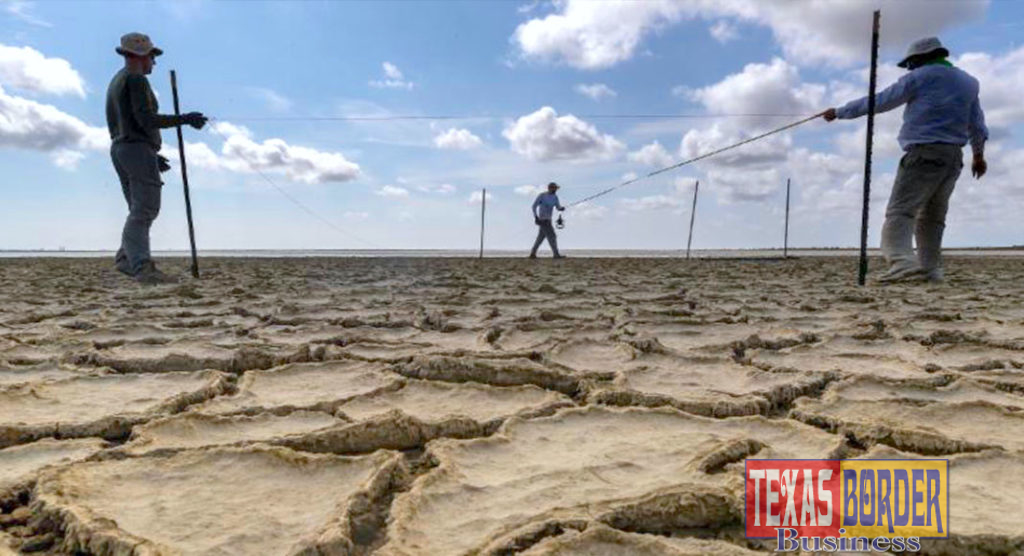
Texas Border Business
As the climate warms, the amount of rainfall likely will change. Although we have a good idea of how rainfall will change along the Gulf Coast, the models for South Texas are less clear. Who can say if there will be fewer or more intense storms? Or what such changes will mean to coastal plant life along the Gulf 20 to 40 years from now.
To get a compressed look at what could happen in the future, Dr. Christopher Gabler, professor of Environmental Sciences at The University of Texas Rio Grande Valley, has built a series of structures that will alter the environment in small areas to test physical and biological reactions to changes in rainfall.
Essentially, the structures will allow Gabler to fast forward.
“This research will give us a more mechanistic understanding of how, and why, and when plant functional groups will change in coastal wetlands,” Gabler said. “This will allow us to better manage coastal lands and better respond to changes in climate. And it may even allow us to mitigate some of the changes that we expect.”
ECOSYSTEM SERVICES
Gabler and his team of students want to know if higher temperatures in Brownsville, coupled with less rain, will cause the existing, prevalent flora – like mangroves – to give way to coastal succulents. Will any of the changes affect fish habitat? Coastal erosion? What about increased rainfall? What might happen? And can we somehow prepare for such changes?
UTRGV graduate student Ivy Hinson, who is working with Gabler on the project, said they are looking at changes in rainfall patterns and how those pattern changes might affect plant communities.
“These changes in plant communities mean a change in ecosystem services,” Hinson said. “Ecosystem services are just basically benefits provided by an ecosystem. Things like habitat. In wetlands, this basically means a place for fish to live.”
Another ecosystem service is erosion protection. Rio Grande Valley coastal wetlands are dominated mainly by algae mats and mangrove trees, Hinson said.
“And so, when you see a shift in plants, you’re obviously going to see a difference in erosion,” she said. “If we’re going to see less rainfall patterns here, we may see fewer plants in general. So, if you lose these plants, you’re going to lose ecosystem services.”
RAINFALL SIMULATION RESEARCH
Gabler says there are two main problems to be studied before being able to address saving plants and, ultimately, ecosystem services.
“The first is, we don’t actually know whether we’re going to get wetter or drier,” he said. “In many parts of the Gulf of Mexico, we know which direction rainfall will take and approximately how much rainfall will change.
“In South Texas, however, the models do not agree on whether we’re going to get more or less rainfall,” he said.
The second problem is that researchers don’t know exactly what the changes in rainfall are going to mean for the coastal wetland plant communities.
“We hope to find the answer to some of these questions by simulating changes in rainfall in coastal wetlands in South Texas, where transitions between functional groups are most apparent,” Gabler said. “We are catching and redistributing rainfall using a series of rainout shelters – which include roofing panels, gutters and hoses that allow us to move rainfall within a controlled area and don’t require any electricity.”
The system his team is building means they can be built anywhere, he said, “including in critical areas, like in endangered whooping crane habitat in Aransas. So, now we are able to monitor how plants change given these different amounts of rainfall.”
His research data eventually will be able to show scientists how South Texas plant communities will change.
“We’ll be able to disentangle – mechanistically – how both the environmental tolerances of different plant species, and the competitive or beneficial relationships between these species, will influence the overall outcomes of these changes in climate.”
Gabler predicts seeing some changes in the first year or two, but bigger changes probably will be three or four years down the line.
“At that point, we’ll have enough data to do a more complete analysis and refine our current models, which will help us better manage the land and coastal natural resources – and possibly, mitigate some climate change impacts,” he said.
The end game is sustainability.“Ultimately, this work will help our human societies – and the ecological communities that we depend upon – to remain sustainable in the face of future environmental change,” Gabler said.





















